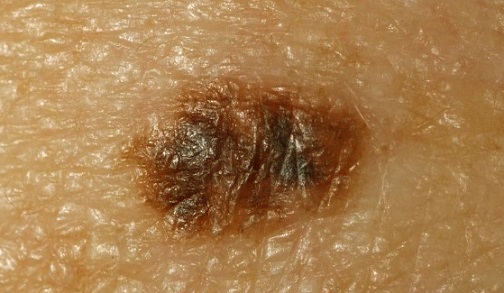Nikhil Prasad Fact checked by:Thailand Medical News Team Nov 19, 2024 1 year, 1 month, 2 weeks, 1 day, 3 hours, 22 minutes ago
Medical News: Norway, ranking third globally for melanoma incidence, is witnessing a worrisome trend in the rise of thin melanomas. Researchers from the University of Oslo, including post-doctoral fellow Raju Rimal and Professor Marit B. Veierød, have analyzed data spanning over three decades (1983–2019) to uncover significant trends in melanoma thickness. Their findings reveal not only the increasing prevalence of thinner melanomas but also disparities based on age and gender.
 Rising Incidence of Thin Melanoma in Norway Raises Alarm
Rising Incidence of Thin Melanoma in Norway Raises Alarm
This
Medical News report dives into their comprehensive study conducted in collaboration with the Norwegian Institute of Public Health and Oslo University Hospital, provides critical insights into how melanoma incidence has evolved over the years.
A Closer Look at Melanoma Trends in Norway
The study, based on data from over 45,000 melanoma patients in Norway, revealed that the incidence of thin melanomas (measuring 1mm or less) has increased significantly over time. These thin melanomas showed a sharp rise between 1983 and 1990, a subsequent plateau lasting 15 years, and then another dramatic surge starting in 2004. However, this plateau phase remains unexplained and stands out as a unique observation compared to trends in thicker melanomas.
Interestingly, the incidence of thicker melanomas (greater than 1mm) also increased, particularly in men, and these differences widened with age. Men aged 60 and above were more likely to develop aggressive thicker melanomas, while women generally exhibited thinner melanomas at a younger age. This gender disparity points to the need for targeted prevention strategies.
Key Findings of the Study
The study categorized melanomas into four groups based on their thickness:
-T1 (≤1mm): The incidence of these thin melanomas surged, especially among older individuals. The sharp increases in recent years suggest improved detection but may also hint at overdiagnosis.
-T2 (>1–2mm): A steady increase in these melanomas was observed, particularly among men, with an annual percentage change (AAPC) of 2.8%.
-T3 (>2–4mm): A rise in this category was significant only in men, underlining their vulnerability to late-stage diagnosis.
-T4 (>4mm): Although less common, the incidence of very thick melanomas also climbed, particularly in older men, suggesting gaps in early detection.
Thinner melanomas (T1) are more sensitive to diagnostic advancements, making them easier to detect. However, their increasing numbers have not corresponded to a decline in thicker melanoma cases, indicating that early detection alone is insufficient to curb the disease.
Gender and Age Disparities
A striking aspect of the findings was the higher incidence of advanced melanomas in men compared to wo
men. Men were less likely to conduct self-examinations or seek medical advice, leading to delayed diagnosis. Women, on the other hand, were diagnosed at younger ages, likely due to greater skin health awareness and regular check-ups.
Age also played a crucial role. While melanoma rates stabilized among younger age groups born after 1950, older individuals, especially men, showed significant increases in all melanoma categories. These trends underline the critical need for targeted public health campaigns focusing on older populations.
What Drives These Trends?
The study suggests multiple factors driving the rise in melanoma cases:
-Increased UV Exposure: Rising sun exposure, particularly in Norway's fair-skinned population, is a major risk factor.
-Improved Awareness and Diagnosis: Enhanced awareness among the public and healthcare professionals has led to the detection of thinner melanomas.
-Potential Overdiagnosis: Changes in diagnostic practices may result in overdiagnosis of non-lethal lesions, contributing to the spike in thin melanoma cases.
Despite these advancements, Norway lacks a nationally funded melanoma prevention program. Campaigns by organizations like the Norwegian Cancer Society (NCS) have raised awareness, but sunburn and unsafe sun habits remain prevalent.
Implications for Prevention and Awareness
The findings emphasize the urgent need for public health initiatives to promote early detection and prevention. Regular skin checks, awareness of rapidly changing moles, and adopting sun-safe behaviors are essential. Older men, in particular, require targeted education about the risks of advanced melanomas and the importance of monitoring their skin.
The study also highlights the role of healthcare professionals in reducing diagnostic delays, especially for nodular melanomas, which grow quickly and are often detected late.
Conclusion
This study provides valuable insights into the alarming rise in melanoma cases in Norway, particularly among older men. The significant increase in thin melanomas underscores the importance of early detection, but the concurrent rise in thicker melanomas reveals that more needs to be done. Public health efforts must prioritize older populations and men, who are at higher risk of late-stage diagnosis.
The researchers call for greater coordination between national health authorities and non-governmental organizations to implement widespread prevention and awareness campaigns. Ensuring access to dermatological care and promoting routine skin checks can help combat the growing burden of melanoma.
The study findings were published in the peer-reviewed journal: Acta Dermato-Venereologica.
https://medicaljournalssweden.se/actadv/article/view/26110
For the latest Cancer News, keep on logging to Thailand
Medical News.
Read Also:
https://www.thailandmedical.news/news/alarming-rise-in-early-onset-colorectal-cancer-mortality-among-young-adults-aged-20-to-44
https://www.thailandmedical.news/news/study-shows-that-more-young-vietnamese-are-developing-cancer-and-are-dying-from-cancer
